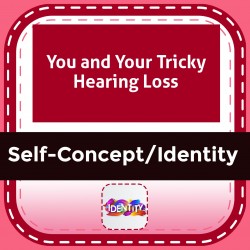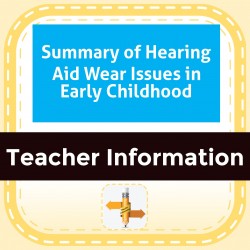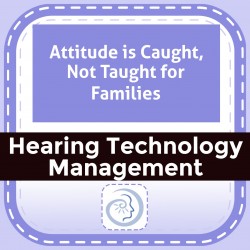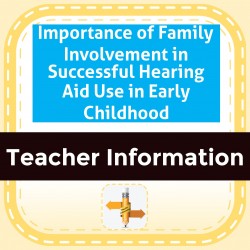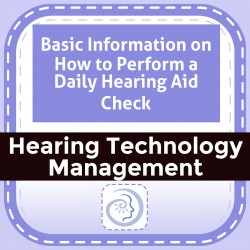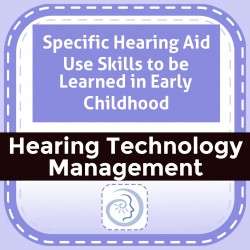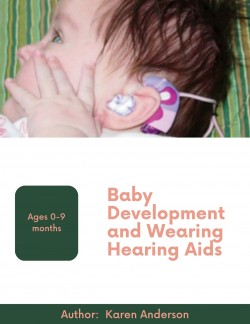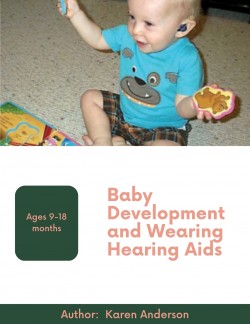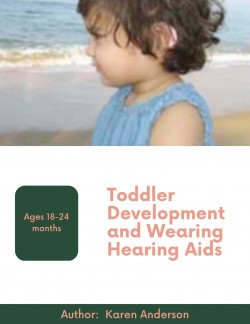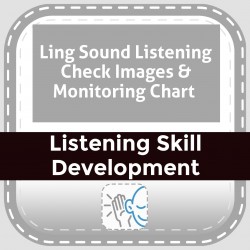Ability Levels
Categories
Resource Types
Age/Grade Range
CCSS
Anchor Standard
Speaking & Listening
Language
Reading
You and Your Tricky Hearing Loss
$ 050
The purpose to You and Your Tricky Hearing Loss is to help the child express the internal meaning of what it is like for them to have a hearing loss. The student is asked to describe different aspects
...
of the hearing loss as though it is separate from themselves. This is an active step in helping the student to recognize how different they feel from others and allow discussion to provide other perspectives. This exercise can be followed by The Secondary School Survey (P01SCI0664), the Wizard's Challenge Game (P01SCI0668) or any work to develop communication repair and self-advocacy skills.
Summary of Hearing Aid Wear Issues in Early Childhood
$ 1
Summary of issues in getting young children to use hearing aids and what families can do. Chart listing why children may reject their hearing aids and what families can do when the child rejects heari
...
ng aids. Divided into age ranges from K-2; 3-5 years. Also includes information on baby temperament as it can effect hearing aid use and the powerful handout Attitude is Caught, Not Taught which sheds light on how parent behavior helps shape child attitudes toward hearing aid use and hearing loss.
Attitude is Caught, Not Taught for Families
$ 0
This is a powerful handout Attitude is Caught, Not Taught which sheds light on how parent behavior helps shape child attitudes toward hearing aid use and hearing loss.
Importance of Family Involvement in Successful Hearing Aid Use in Early Childhood
$ 1
This information for families includes motivation for focusing on consistent hearing aid use in a busy household. It describes the use of parent self-talk to set the foundation for self-advocacy skill
...
s. Page with an image clarifying what is meant by 'Language is Caught, Not Taught' in relation to listening in quiet and noise, with and without hearing devices.
Basic Information on How to Perform a Daily Hearing Aid Check
$ 0
This handout provides a step-by-step approach to performing a hearing aid check. Includes images, descriptions, and rationale. Also has images for putting hearing aids on.
Specific Hearing Aid Use Skills to be Learned in Early Childhood
$ 0
This information specifies 5 hearing-aid-wear skills to master by age 3, or no later than the end of preschool. It includes a chart specifying the role of the parent, the child, and the DHH profession
...
al for each of 7 skills.
Baby Development and Wearing Hearing Aids - 0-9 Months of Age
$ 095
This information describes infant development in terms of successful hearing aid use and what families should be aware of, and can do to support full-time hearing aid wear. Divided into the age ranges
...
0-6 months and 6-9 months. Provides detail on why to check hearing aids daily and on how to perform a Ling sound listening check starting about 3 months of age.
Baby Development and Wearing Hearing Aids 9-18 Months of Age
$ 095
This information describes infant development for 9-18 months in terms of successful hearing aid use and what families should be aware of, and can do to support full-time hearing aid wear. Provides d
...
etail on why to check hearing aids daily and on how to perform a Ling sound listening check for 9-14 and 14-18 months of age and how lack of response relates to the audiogram. Includes information about typical development of speech production skills.
Toddler Development and Wearing Hearing Aids 18-24 Months of Age
$ 095
This
information describes toddler development for 18-24 months in terms of
successful hearing aid use and what families should be aware of, and can do
to support full-time hearing aid we
...
ar. Delves into the start of independence
skills, teaching children that only adults remove hearing aids and how to
perform a Ling sound listening check appropriate to this age range. Includes images to assist in performing the
Ling sound check.
Ling Sound Listening Check Images & Monitoring Chart
$ 095
The first page has 8 early childhood images representing the Ling sounds. Page 2 is a chart for recording results of Ling sound listening checks for use by families or early childhood programs.
 Your browser is out of date. For best experience switch to latest updated Browser.
Your browser is out of date. For best experience switch to latest updated Browser.
 Get Chrome
Get Chrome Get Edge
Get Edge Get Firefox
Get Firefox